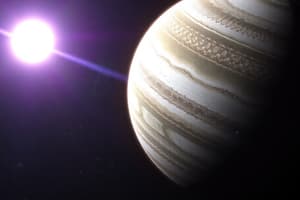Podcast
Questions and Answers
What is the primary function of clipper circuits?
What is the primary function of clipper circuits?
- To filter noise from signals
- To convert AC signals to DC
- To remove unwanted portions of signals (correct)
- To amplify signals
Unbiased clipper circuits can clip both positive and negative signals.
Unbiased clipper circuits can clip both positive and negative signals.
False (B)
What type of clipper circuit allows negative portions of a signal to pass through?
What type of clipper circuit allows negative portions of a signal to pass through?
Unbiased Positive Clipper
A biased negative clipper circuit is used to clip the _____ portions of the input signal.
A biased negative clipper circuit is used to clip the _____ portions of the input signal.
Match the following types of clipper circuits with their descriptions:
Match the following types of clipper circuits with their descriptions:
In an unbiased negative clipper, when the input signal goes positive, which action occurs with the diode?
In an unbiased negative clipper, when the input signal goes positive, which action occurs with the diode?
Biased clipper circuits allow full control over the clipping level.
Biased clipper circuits allow full control over the clipping level.
What is another name for clipper circuits?
What is another name for clipper circuits?
Flashcards
Clipper Circuits
Clipper Circuits
Electronic circuits that selectively remove portions of an input signal above or below a certain reference level.
Unbiased Clipper
Unbiased Clipper
Clipper circuits that clip signals without any DC voltage bias.
Unbiased Positive Clipper
Unbiased Positive Clipper
A clipper circuit that removes the positive part of the input signal, allowing the negative part to pass.
Unbiased Negative Clipper
Unbiased Negative Clipper
Signup and view all the flashcards
Biased Clipper
Biased Clipper
Signup and view all the flashcards
Biased Positive Clipper
Biased Positive Clipper
Signup and view all the flashcards
Biased Negative Clipper
Biased Negative Clipper
Signup and view all the flashcards
Half-Wave Rectifier
Half-Wave Rectifier
Signup and view all the flashcards
Study Notes
Electronic Devices and Circuits (2131006) - Clipper Circuits
- Clipper circuits are used to remove portions of a signal above or below a defined reference level.
- A simple example is a half-wave rectifier, where everything below zero is cut off, leaving only the positive or negative portions.
- Clipper circuits are also called limiters, amplitude selectors, or slicers.
- Clipper circuits come in different types: unbiased and biased.
Types of Clipper Circuits
-
Unbiased Clippers:
- Positive clipper: Clips positive portions of the input signal, allowing negative portions to pass through.
- Negative clipper: Clips negative portions of the input signal, allowing positive portions to pass through.
-
Biased Clippers:
- Biased series positive clipper: Uses external biasing voltage to adjust the clipping level of the AC signal.
- Biased series negative clipper: Similar to the positive clipper, but for clipping the negative portions of an AC signal.
Unbiased Positive Clippers
- Positive portions of the input signal are clipped off, and the negative portions pass through.
- The positive half-cycle of the input is completely removed from the output signal.
- The diode acts as an open switch when the input signal is positive.
Unbiased Negative Clippers
- Negative portions of the input signal are clipped off, and the positive portions pass through.
- The negative half-cycle of the input waveform is removed from the output.
- The diode acts as an open switch when the input signal is negative.
Biased Series Positive Clipper
- Externally biasing adjustment allows for changing the clipping level of the AC signal.
- When the input voltage exceeds the bias voltage, the diode acts as an open switch, and no output is produced.
- Output signal mirrors the input waveform but only for portion of the input that is below biased voltage.
Biased Series Negative Clipper
- Externally biasing adjustment allows for changing the clipping level.
- When the input voltage falls below the bias voltage, the diode acts as an open switch, and no output is produced.
- The output signal mirrors the input waveform but only for portions of the input that are above the biased voltage.
Working Principles (General for all types)
- The diode is replaced with its equivalent circuit model to understand the behavior for positive and negative input.
- When the input signal reverses, the diode's bias changes; a forward-biased diode conducts, while a reverse-biased diode acts as an open switch.
- This switch-like behavior determines the portions of the input signal that are clipped.
- The explanations consider ideal diodes.
Studying That Suits You
Use AI to generate personalized quizzes and flashcards to suit your learning preferences.
Related Documents
Description
Explore the fundamentals of clipper circuits in electronic devices. This quiz covers both unbiased and biased clipper types, highlighting their functions and applications in signal processing. Test your knowledge of how these circuits manipulate signals within defined reference levels.




